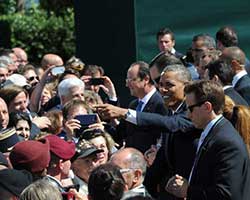Student Success: Student Success: Vasily Kovalev


Since he was a child, Vasily Kovalev was a fan of photography. After receiving his first film camera in 2002, he started to build upon this interest, snapping photos of his family and friends as a hobby. But soon after, he realized he wanted to get more serious with his work. He started taking photography lessons through internet forums and sharing his images with stock sites like Shutterstock and Dreamstime. Soon after, he enrolled with NYIP. Combining his experience with graphic design with his growing photography skills, Kovalev has gone on to create an image that was used on the cover of a book (check it out!). We recently had the opportunity to chat with Vasily about his experience with photography education, and his plans for the future. Here’s what we learned:
1. When did you realize that photography was the field you wanted to pursue?
I was interested in photography since my childhood and I got my first camera as a present from my parents when I was 10 years old, but from my teenage years till almost 25 I didn’t practice any photography much. When I got my first film camera around 2002, I mostly was taking pictures of my family, but then I quickly realized that I still have a desire in me to create nice images and that I actually enjoy photography very much. Next big change happened when everything photography related went digital and it became possible to create pictures without printing them out and have full control over the whole process. For me that happened around 2010 and I realized that I want to become a professional in the field of photography.
2. When did you enroll at NYIP?
Since 2010, when I have realized that I wanted to become a professional photographer, I was educating myself in this field through different internet sites and forums as well as books. Around that time I also found out about stock photography and have applied to a few agencies, such as Shutterstock and Dreamstime.
I have submitted some of my pictures and was accepted as a photographer, but only had few pictures to sell through these sites at the moment. Working with agencies’ quality control had taught me a lot and have inspired me to learn more about photography and its technical aspects. I was working as a graphic designer fulltime, so I had some knowledge in editing pictures. But learning to create pictures that I could use in my work became a challenge for me and I decided that in order to develop as a photographer I need to get some kind of consistent and thorough education. So in 2013 I have enrolled in NYIP.
3. What is your coursework like?
I wanted to pass the Professional Photography course in one year, but as I was working full time as a designer, I did not have much free time and mostly was studying on the weekends. I have read and studied all the materials and have passed the written tests during the first year of my studies, but the practical part was a bigger challenge as pictures required to pass it had to be thought through and took some preparation and planning. For some assignments I waited for a right opportunity to arise, but I had read through all the assignments and if I had a photo shoot in a studio planned I already knew which pictures I should try to take that would be required in the future projects.
4. Is your mentor helpful during the process?
My mentor was very encouraging and helpful and has given me good advice in every project and pointed out things I should pay attention to produce better pictures.
5. What type of work are you doing now?
I continue to work as a full time designer and I continue to submit my pictures to the stock agencies. I am working with around 10 different agencies now, and though my portfolio is still small, it has grown a bit from my first few pictures to a few hundred pictures.
6. Tell us about the shot that was used for a book cover!
I am very happy for this shot as my main motivation for photography was producing something that can be used for different projects and publications. Though this shot looks like nothing spectacular, you never know what customer would like or want for his or her project. The goal is to take as many shots as you can as good quality as you are able. One of the niches of the stock photography market is images with white background as they can be used for variety of different publications. So from the beginning I was shooting with this in mind and had to prepare the background and lightning conditions to take this picture. I also added an apple to a guinea pig as it gives good attractive point to a picture as well as to interest the little animal ☺
The picture I am talking about, and the book cover itself can be found here!
7. What qualities do you think a successful, aspiring photographer needs?
If you decide to take photography to a professional level, then there are a lot of technical details that you need to keep in mind to produce a good quality picture that can be used in a publication. First of all – focus. Picture should be as sharp as possible and focus should be on the main subject of your picture, then good lightning is a must, especially if you want to produce white background. And so on. Aside from technical points, as it’s mentioned in the course consistently, you need to train your eye and brain to see nice composition, rhythm and pattern, leading lines, and most of all to have a clear goal and subject for your photo.
8. After graduation, what are your plans?
The course has helped me to see different aspects of photography and I have newly discovered portrait photography, architectural photography and I want to develop my skills in these areas more and maybe one day to become full time photographer.
9. What do you always carry with you in your camera bag?
In my photo backpack I have a 100 mm lens. I usually have a 50 mm lens on camera for most of my work and I use 100 mm for portraits and close ups. I have a flash, batteries, flash diffuser and I try to always carry a tripod.
10. What’s the most interesting thing you’ve learned so far at NYIP?
For me the most important things were basics of composition: leading lanes, framing etc. A few tips were particularly interesting for me and helped a lot, for example, hyperfocal distance focusing, camera speed setting for taking photos without tripod to avoid camera shake. Lightning setup for portraits, architectural photography, - there is a lot and it’s hard to choose just one thing.
11. If you had to pick one, what was the most memorable photography project you’ve ever completed?
Every project had its beauty, so to say, but I guess for me it’s always the last one. This summer I travelled to Montenegro and it was a great place for architecture photography as there are a lot of old and beautiful European buildings with wonderful nature, sea and mountains as a background.
12. Describe a day in your life as a photographer.
Since photography is not my full time occupation at the moment, I have to think about my next project ahead of time. Usually I have a photo shoot at weekend, so I need to plan it and get prepared for it during the week. If it’s in the studio, I need to prepare different props for the shoot and think about lightning, so if I need any extra equipment I would arrange it before the shoot. If it’s outside then a lot depends on the weather. Night beforehand I check and recharge my equipment, so next morning I am ready to go even early in the morning. If I plan to shoot outside, I try to schedule my trips so that I can shoot either early when the light is still not very strong, or closer to the evenings beautiful golden light. Then I shoot either in the morning or evening and the next day I usually spend on editing and preparing my pictures for the customers or stock agencies.
13. What’s the most rewarding part of studying photography?
For me it is understanding of different principles and learning to apply them to the pictures I got an inspiration to shoot. Gradually you’ll see that your works become better and more attractive for the customers. This feels great and inspires you to shoot more!
14. What subject is usually your favorite to shoot?
Studying at NYIP has opened my eyes to different kinds of photography, some I already knew and some were new for me. I discovered for myself portraiture and I enjoy it a lot, and another favorite subject for me at the moment is architecture.
15. If you could give one piece of advice to our current and prospective students, what would it be?
Take as many opportunities to shoot as you can and keep yourselves open to different kinds of photography. You might find that you enjoy some new field of photography and it will inspire you to go on. And try to showcase your work through all the available means, you’ll never know where you would meet your next customer and which of your pictures would fit right in for your customers’ project.
If you are interested in how your pictures might be used, you can check out this page on my site, where I have collected different examples of how my pictures are being used for at different internet sites: http://totalpixels.net/samples-by-vasily-kovalev/
And I’ll be happy to see your works and share my new images with you through Instagram
https://www.instagram.com/vasilykovalev77/
Thank you and I wish you a lot of inspiring and beautiful images!
Want to learn more? NYIP offers accredited photography classes that can help you learn photography or start a new career. Request your free course catalog




